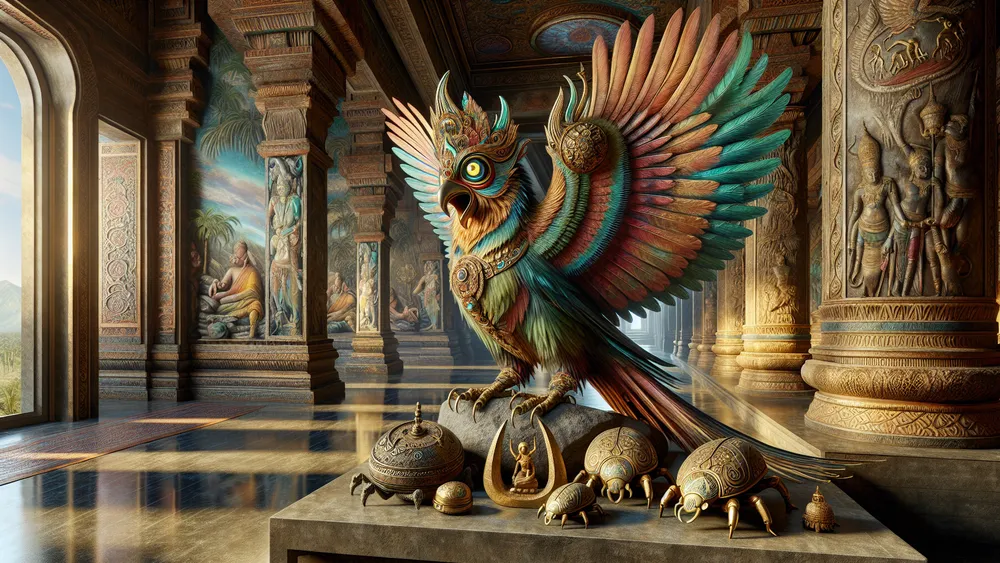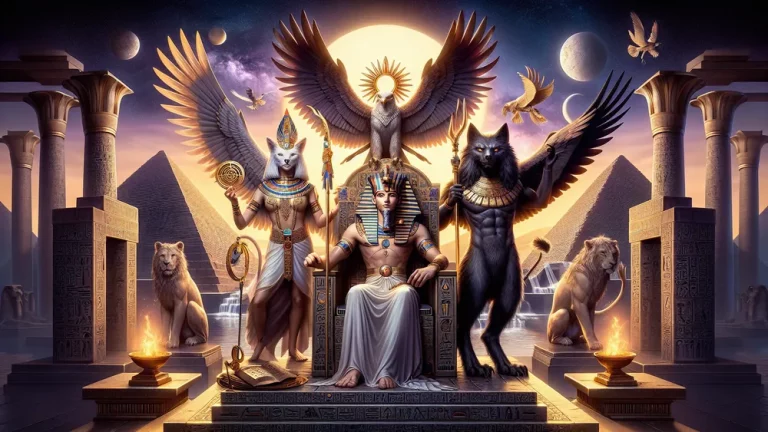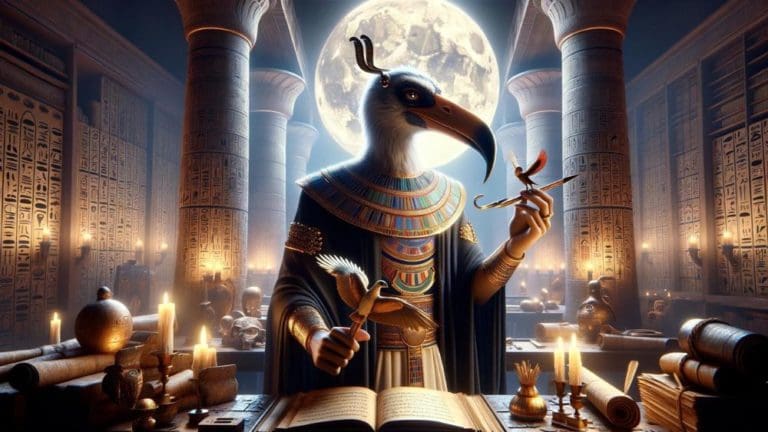Ba: Ancient Egyptian Soul Aspect In Bird Form
When you envision ancient Egyptian ideas, probably stretch towards huge pyramids, detailed hieroglyphs, and complex ceremonies for life after death. The thought of deeper aspects? Maybe not often. The topic here mainly is the soul, specifically the Ba. In this blog post, the intriguing concept of the Ba, a big part of the old Egyptian soul, gets examined.
Key Points:
- The Ba in ancient Egyptian culture is a human-headed bird representing the soul’s mobility and individuality.
- Ba interacts with other soul components like the Ka (life force) and Akh (glorified spirit) for a successful afterlife.
- Ba’s role after death involves moving between the living and the dead, with rituals performed to aid its safe passage.
- In ancient Egyptian art, Ba is often shown as a human-headed bird hovering over the deceased or leaving the tomb.
- The evolution of the Ba concept from the Old Kingdom to the New Kingdom reflected societal and religious changes.
- The Ba’s symbolism signifies the soul’s ability to move between the physical and spirit worlds, aiding in the deceased’s rebirth.
Often shown as a person-headed bird, the Ba has the special trait of moving between the body world and spirit world. We will go over what the Ba is, why it’s important when you die, what happens to it, and its link with other soul pieces like the Ka and Akh.
Additionally, in ancient Egyptian drawings and writings, how the Ba appears will be looked at, plus how people’s view of it changed through time. So, let’s look deep into the Ba, learning its key part in old Egyptian beliefs.
Ba: Overview and Key Facts
| Key Point | Description |
|---|---|
| Definition | The Ba is a main part of the old Egyptian soul. Often shown as a human-headed bird. |
| Significance | The Ba stands for the personality and uniqueness of a person, letting them go between the body world and spirit world. |
| Symbolism | The Ba-bird stands for the soul’s power to leave the grave and come back, showing the old Egyptians’ thoughts on life after death and moving spirits around. |
| Role in Afterlife | After someone dies, the Ba starts a trip, dealing with the world of the living and the dead’s grave, which is important for the dead person’s change and rebirth in the next life. |
| Interaction with Other Soul Components | The Ba works with other soul parts, such as the Ka (life force) and Akh (changed spirit), to make sure the next life is good. |
| Depictions in Art | The Ba often appears in grave paintings, sculptures, and old writings, pointing out its importance in old Egyptian life. |
| Evolution Over Time | The idea of the Ba changed from the Old Kingdom to the New Kingdom, affected by shifts in religious beliefs and ways people practiced their faith. |
The Idea of Ba in Ancient Egyptian Beliefs
To get the Ba, you must look at its meaning and place in the larger picture of ancient Egyptian spirituality. Let’s dig into what the Ba means and why it mattered so much to the ancient Egyptians.
What Ba Means and Why It’s Important
The Ba is one of the main parts of the old Egyptian soul, often shown as a human-headed bird. In old Egyptian thought, the Ba stands for the personality and individuality of someone, making them different from others. Its place when it comes to the next life is big, as the Ba was believed to leave the grave and come back, showing the soul’s move between the body and spirit worlds. To make this idea more clear, think of the Ba like the idea of the soul or spirit in other beliefs, which has a person’s unique essence. The Ba’s importance can be summed up in several main points:
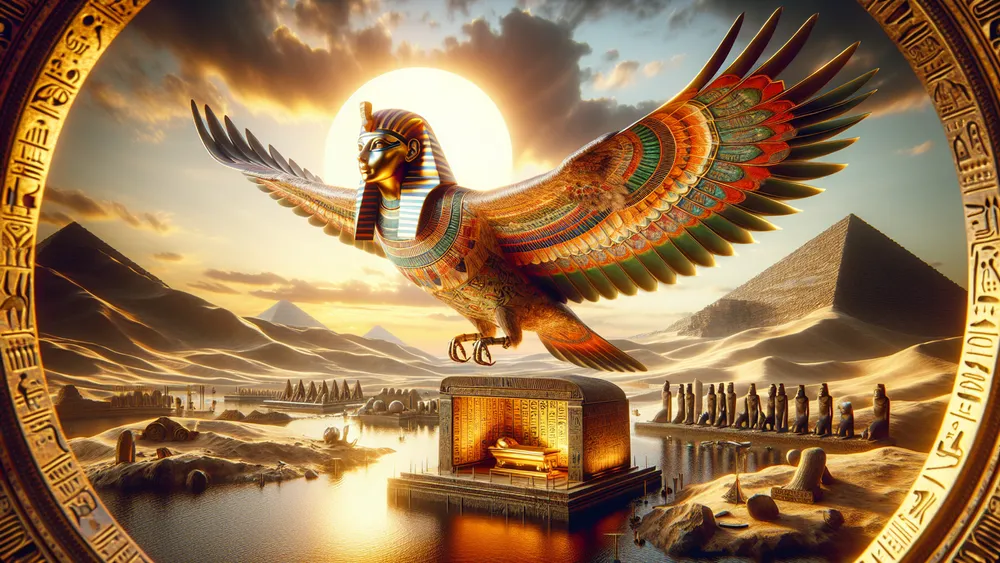
- It holds the person’s personality and uniqueness.
- It lets for dealing between the living and the dead.
- It is key for the dead person’s journey and change in the next life. Understanding the Ba is basic to getting the old Egyptians’ complex ideas about the soul and the next life, pointing out their intricate spiritual view.
The Ba in old Egyptian beliefs represents a person’s unique essence, enabling communication between the living and the dead and facilitating the transition to the afterlife.
The Ba-Bird Symbolism
The Ba-bird is a striking and different figure in old Egyptian art, often shown as a bird with a human head. This picture is more than just art; it’s deeply symbolic and shows the old Egyptians’ thoughts about the soul and what it can do. The Ba-bird stands for the soul’s power to move easily between the body world and the spirit world, just like a bird can fly in the sky. To make this idea clearer, think of the Ba-bird as somewhat like the idea of a guardian angel in other beliefs, which can move between areas to protect and guide. The meaning of the Ba-bird can be broken down into several main points:
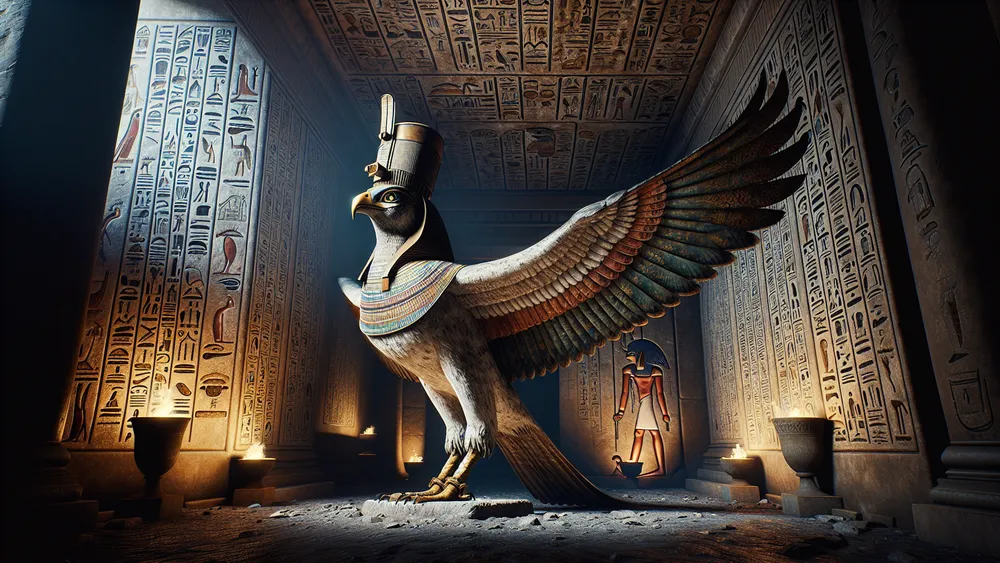
- It shows the soul’s ability to move and freedom.
- It means the link between the body and spirit worlds.
- It holds the person’s unique personality and essence. In old Egyptian texts and grave paintings, the Ba-bird often is seen hovering over the dead or leaving the grave, showing its part in the soul’s trip after death. This strong symbol stresses the old Egyptians’ detailed thoughts about life, death, and the next life.
Ba’s Job After Death
So we know what the Ba is and its meaning. Now, let’s look at the important role it has after death.
Ba’s Journey After Death
In old Egyptian ideas, the trip of the Ba after death is a really interesting and detailed process. When death happens, the Ba could leave the grave and come back whenever it chooses, showing the soul’s ability to go between the physical and spirit worlds. This kind of trip is like the idea of a spirit seeing loved ones, a thought found in many cultures.
The Ba would leave the grave during the day, to be with the living world, usually shown as floating over the dead person’s body or going to known places. At night, it would come back to the grave to rest, making sure the soul stayed linked to its body remains. This round trip points out the old Egyptians’ belief in keeping up the bond between the living and the dead.
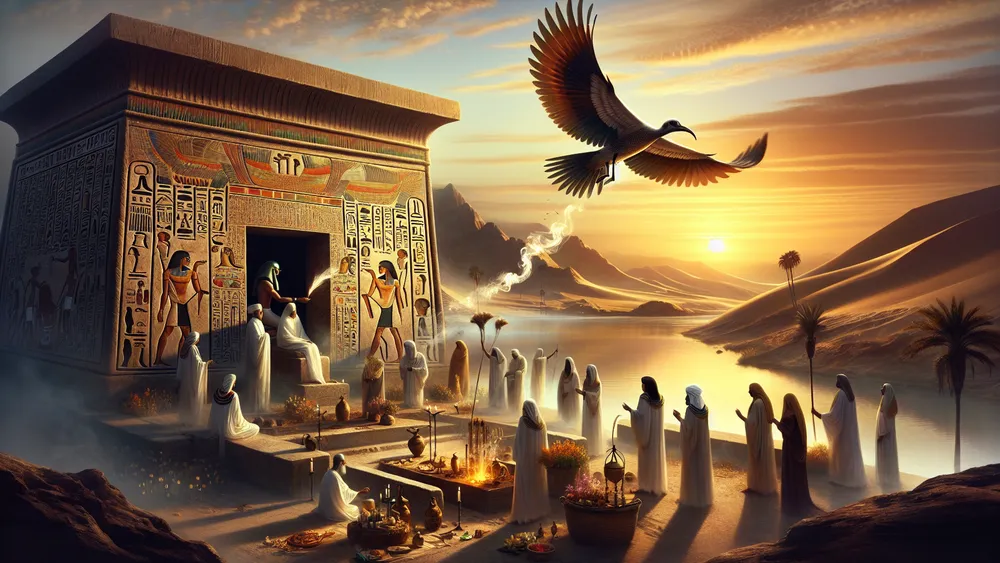
So, to keep the Ba’s trip safe, the old Egyptians did many rituals and prayers. They made these doings to keep the Ba away from danger and lead it on its way. For instance, the “Opening of the Mouth” ritual was done so the dead could breathe and talk in the next life, helping the Ba move. Also, prayers and gifts were given to keep the Ba going and give it the energy it needed for its trips. We can list these rituals like this:
- The “Opening of the Mouth” ritual to help the Ba move.
- Prayers and gifts to keep the Ba going and safe.
- Rituals to make sure the Ba comes back to the grave each night. These acts point out how key the Ba’s trip was in old Egyptian beliefs, showing their strong thoughts about the afterlife and the soul’s ongoing tie to the living world.
Ba and the Idea of Being Born Again
In old Egyptian religion, the Ba is tied to the idea of being born again, playing a key part in the dead person’s change and new beginning in the next life. The Ba was thought to be needed for the dead person to be born again, as it held the person’s special essence and personality. This process of being born again can be compared to the idea of a soul’s trip to a new life, a thought found in many beliefs. The Ba would leave the grave to get the needed spiritual energy and come back to the body, helping the dead person’s change into a new, lasting form. This round trip of the Ba made sure the dead person could be born again each day, much like the sun comes up again every morning. The Ba’s part in being born again can be listed in several key points:
- It holds the person’s special essence needed for being born again.
- It gets spiritual energy to help with the change.
- It makes sure the dead person’s daily new start in the next life. Seeing the Ba’s part in being born again shows the old Egyptians’ strong belief in the soul’s lasting trip and the promise of never-ending life.
Ba in Relation to Other Soul Bits
Now that we’ve looked at the Ba’s trip and its part in being reborn, let’s see how the Ba works with other main pieces of the old Egyptian soul.
Ba vs. Ka: What’s the Difference?
In old Egyptian belief, both Ba and Ka are important bits of the soul, each with its own role and traits. The Ba means a person’s unique personality and essence, often shown as a bird with a human head that can move between the real and spirit worlds. But, the Ka is seen as the life force or energy that keeps a person alive, usually shown as a double or twin of the person. To make this clearer, think of the Ba as the part of you with your memories, emotions, and traits, while the Ka is like the energy that keeps you alive. These two parts work together to keep the dead person OK in the next life. Here is a table to show the main differences and roles of Ba and Ka:
| Aspect | Ba | Ka |
|---|---|---|
| Representation | Human-headed bird | Double or twin |
| Role | Personality and essence | Life force or vital essence |
| Function | Travels between realms | Keeps life going |
| Depiction | Often seen leaving the tomb | Often seen as a spiritual double |
Seeing these differences helps to understand the details of the old Egyptian idea of the soul and how each part helped in the person’s trip in the next life.
How Ba and Akh Work Together
In old Egyptian ideas, the Ba and Akh are two important parts of the soul that work as a team to make sure the dead person’s journey in the afterlife goes well. The Ba, meaning the person’s unique essence and personality, acts with both the world of the living and the spirit world. The Akh, however, is the changed and glorified form of the soul, reached through the right rituals and moral actions. Think of the Ba as the part of you that keeps your personal traits and memories, while the Akh is like the best, final version of yourself that lives in the afterlife. Together, they help the dead person move through the afterlife and gain never-ending life. Here are the key points on how the Ba and Akh work together:
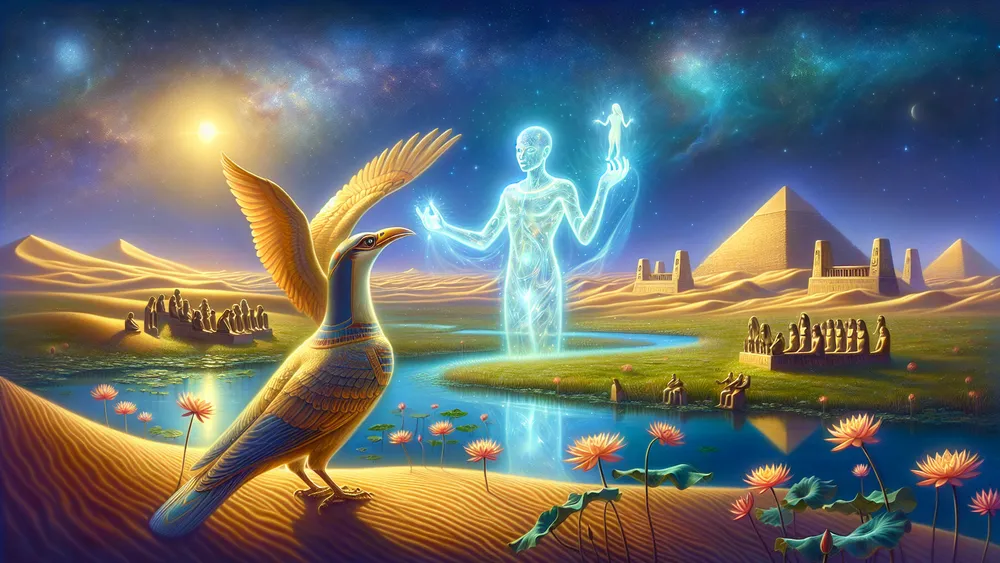
- The Ba keeps the person’s personality and essence.
- The Akh means the changed, glorified state of the soul.
- The right rituals and moral actions are needed for the Ba to turn into an Akh.
- Both parts work together to make sure the dead person’s journey in the afterlife is successful. Seeing how the Ba and Akh work together shows the old Egyptians’ detailed beliefs about the soul and the afterlife, underlining the need for both personal traits and spiritual change.
The Ba and Akh collaborate to guide the deceased through the afterlife, with the Ba preserving personal traits and the Akh representing a perfected version achieved through proper rituals and morality.
Pictures of Ba in Ancient Egyptian Art and Texts
Now we’ve looked at roles and interactions of the Ba with other soul parts, let’s see how the Ba shows up in old Egyptian art and writings.
Art Depictions of Ba
In old Egyptian art, Ba is shown as a human-headed bird. This means its ability to go between the physical and spirit worlds. You see these pictures in tomb paintings and statues, where Ba is often seen hovering over the dead or leaving the tomb. These pictures show Ba’s role in keeping the link between the living and dead. Think of these pictures like today’s symbols that stand for ideas, like a dove meaning peace. The artistic pictures of Ba were important because they visually showed the belief in the soul’s journey and its contacts with the living. Here are some important points about the pictures of Ba in art:
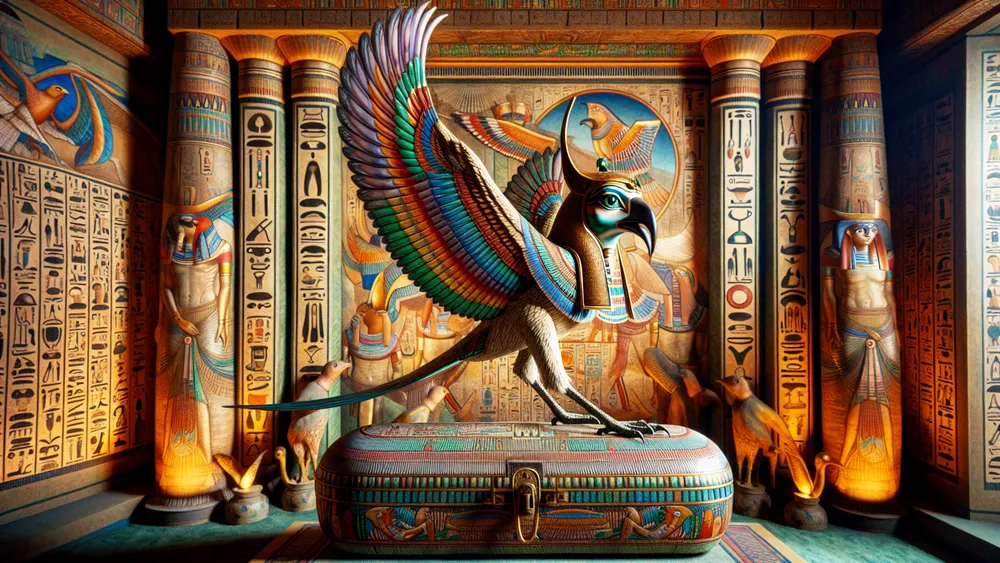
- Ba is shown as a human-headed bird.
- Mostly found in tomb paintings and statues.
- Often seen hovering over the dead or leaving the tomb.
- This shows Ba can move between worlds.
- It visually shows belief in the soul’s journey and its contacts.
These art depictions played a key role in reinforcing the old Egyptians’ beliefs about the soul and afterlife, making the abstract idea of Ba more real and easier to understand.
Book Mentions of Ba in Ancient Texts
Ba shows up a lot in old Egyptian writings, especially in Pyramid Texts and Book of the Dead. These writings give detailed views of Ba’s role and its trip in the afterlife, giving us ideas about old Egyptians’ thoughts on the soul. For example, Pyramid Texts written on walls of royal tombs often have spells and prayers to make sure Ba’s safe trip and its ability to join the dead again.
Likewise, Book of the Dead, a group of funeral writings, has lots of mentions of Ba, showing its key role in getting forever life. Think of these writings like old manuals that led the soul through the afterlife, like how modern holy books shape today’s beliefs. Here are main points on mentions of Ba in old texts:
- Ba shows up a lot in Pyramid Texts and Book of the Dead.
- These writings give detailed views of Ba’s role and trip in the afterlife.
- Pyramid Texts have spells and prayers for Ba’s safe trip.
- Book of the Dead shows Ba’s key role in getting forever life.
- These writings shaped old Egyptians’ views of Ba and its key role.
By looking at these mentions, we get a deeper view of how Ba was seen and the key role it played in old Egyptian thoughts on soul and afterlife.
How the Idea of Ba Changed Over Time
Having looked at the pictures and written mentions of Ba, now check how the idea of Ba changed in different times of old Egyptian history.
How People’s View of Ba Changed from the Old to the New Kingdom
The idea of Ba changed a lot from the Old Kingdom to the New Kingdom. In the Old Kingdom, Ba was mainly connected to pharaohs and the top class, showing their special link to the gods and their power to go beyond death. The Pyramid Texts, from that time, often stress how Ba helps pharaohs on their afterlife journey. But, moving into the Middle and New Kingdoms, B a concept became more common.
Coffin Texts and the Book of the Dead show Ba as a vital part of everyone’s soul, not just the top class. This shows a wider change in beliefs, where afterlife became open for all people.
Several big events and religious changes shaped this shift. The political and social troubles during the First Intermediate Period led to a more inclusive view of the afterlife, seen in the Coffin Texts. Plus, the rise of Osiris cult in the Middle Kingdom made the afterlife idea more common, open to all who lived a good life. Think of these shifts like how today’s religious practices change over time due to social and political forces. Here are main points about Ba’s evolution:
- Initially linked to pharaohs and the top class in the Old Kingdom.
- Became more common in the Middle and New Kingdoms.
- Shaped by political and social troubles during the First Intermediate Period.
- Made more common by the rise of Osiris cult.
- Reflected in texts like Coffin Texts and Book of the Dead.
These shifts show how old Egyptians’ views of Ba changed due to bigger changes in their society and religious practices.
FAQs
1. What is the Ba in ancient Egyptian culture?
The Ba in ancient Egyptian culture is one of the key components of the soul, often depicted as a human-headed bird that represents the individual’s personality and ability to move between the living world and the afterlife.
2. How is the Ba different from the Ka?
The Ba is different from the Ka in that the Ba represents the soul’s mobility and individuality, while the Ka signifies the vital essence and life force.
3. What role does the Ba play in the afterlife?
The role the Ba plays in the afterlife involves reuniting with the deceased’s body each night to ensure the individual’s continued existence and transformation in the afterlife.
4. How is the Ba depicted in ancient Egyptian art?
The Ba is depicted in ancient Egyptian art as a human-headed bird, often shown hovering near the tomb or the deceased.

